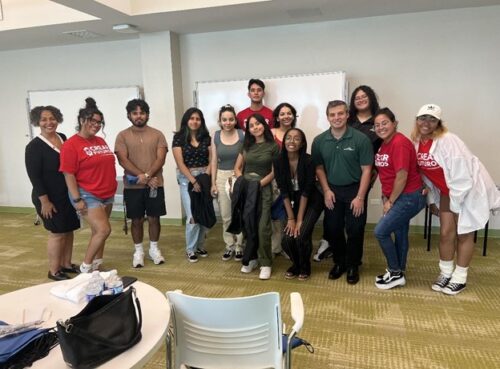
Women protesting for equality Photo Credit: Austin Texas Library
Since this year marks the 100th Anniversary of the Nineteenth Amendment to the U.S. Constitution, giving women the right to vote, it is worthwhile to reflect on the overlooked contributions from women. Women have broken many barriers, changed laws, and led a large powerful movement that will live for centuries.
The right to vote started in the nineteenth century when democracy was expanded and suffrage was extended to most white men, but simultaneously as the gap between white men and free black men grew, the gap between men and women increased.
Many of the new opportunities for men came in a form that closed options for women. Women were denied most of the most basic rights that men had. For example, women couldn’t own property nor have a legal claim to the money they earned. They couldn’t even participate in politics. Women were constrained to only be wives, mothers, and manage the household.
During the pre-Civil War era, the women’s campaign for suffrage started to develop and many groups and organizations also formed, including the U.S. temperance league in which many women became involved. Women expressed political opinions and sought to shape political events despite not having the right to vote. In anti-slavery petition campaigns, lobbying to persuading legislatures to reform laws that deal with married women’s property rights and child custody women responding to the crisis of the Civil War. Women were going against men particularly soldiers from the war who would intimidate them and abuse them. Alcohol abuse was used as the leading cause of domestic violence. The lessons and struggles they learned go a long way towards explaining the many successes they would have in the twentieth century.
The first women’s rights convention was held at Seneca Falls, New York in 1848. The delegates adopted a Declaration of Sentiments that said, “All men and women are created equal” and listed demands for political, social, and economic equality with men.” The earliest victories came in education as some schools were gradually opened to women, starting in the 1840s and 1850s. Many prominent feminist leaders included Susan B. Anthony, Lucy Stone, Elizabeth Cady Stanton, Lucretia Mott, Harriet Tubman, Sojourner Truth.
In 1869, the National Women Suffrage Association was formed by Lucy Stone, and women participants pushed forward to fight for a universal suffrage amendment to the U.S. Constitution. In the 20th century, the leadership of the suffrage movements passed into two organizations. The first, the National American Woman Suffrage Association(NAWSA), under the leadership of Carrie Chapman Catt, was a moderate organization while the second group, the National Women’s Party(NWP), under the leadership of Alice Paul, was more militant. The NAWSA undertook campaigns to enfranchise women in individual states and simultaneously lobbied President Wilson and Congress to pass a woman suffrage Constitutional Amendment. The NWP undertook radical actions, including protests in front of the White House, in order to convince Wilson and Congress to pass a woman suffrage amendment.
Finally, on August 18th, 1920, the nineteenth amendment was finally ratified. The victory is considered the most significant achievement of women in the Progressive Era. It was the single largest extension of democratic voting rights in our nation’s history, and it was achieved peacefully, through democratic processes.
The Women’s Suffrage Movement opened a lot of doors for many women that allowed them to achieve a greater role in society. Women are able to receive more educational, economical, and political opportunities in later decades despite obstacles and hardships they faced. The suffrage movement is the reason why women today are able to hold political positions and set examples for young women even in male-dominated industries. Although today there are still barriers, women continue to open doors for other women and younger generations. Obstacles such as the pay gap between men and women, gender discrimination, still exist, however, there is still a long journey for women to fight and protest for their rights. If it wasn’t for the women leaders in the nineteenth and twentieth century, we wouldn’t be where we are today. The nineteenth amendment will always remain in the Constitution and will always be a reminder of our long and difficult mission to fight for equality.







